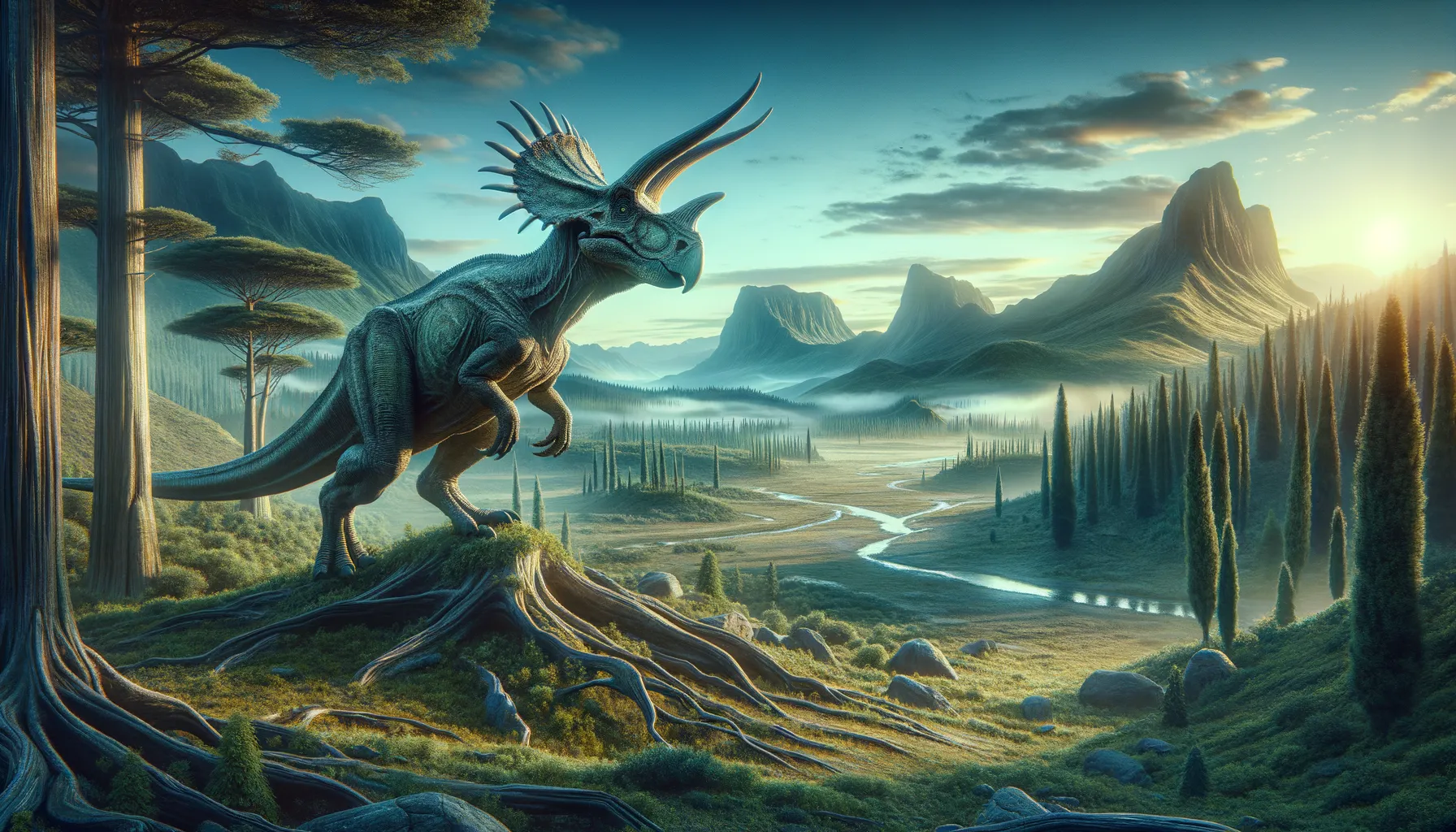
Dysganus
Unraveling mysteries from fragmentary clues
Period
Cretaceous
Length
Likely several meters long, inferred from related species.
Height
Estimated at several feet tall, based on related ceratopsians.
Weight
The weight is not accurately known due to scant fossil remains.
Dysganus is a genus known from fragmentary fossils, making detailed characteristics difficult to confirm. It hails from the Cretaceous period, a time when dinosaurs were thriving. The limited fossils suggest it might have been part of the horned dinosaurs, or ceratopsians. While exact physical attributes remain elusive, its discovery in North America adds to the rich tapestry of diverse dinosaur life from this region.
Diet
Dysganus, likely a herbivore like other ceratopsians, would have fed on the lush vegetation available during its time. This diet might include cycads, conifers, and ferns, relying on strong jaws to process tough plant material.
Hunting
As a presumed herbivore, Dysganus wouldn’t engage in hunting. Its primary focus would be grazing in groups, utilizing possible horn structures for foraging defense.
Environmental challenges
Dysganus likely faced challenges from predation, especially from large carnivorous dinosaurs of its time. The shifting climate and habitats during the Cretaceous could also have impacted food availability. These factors might have influenced its evolutionary strategies, including possible social behaviors for survival.
Speed
Unknown, as specific details about Dysganus's speed have not been established due to limited fossil evidence.
Lifespan
Unknown due to limited fossil evidence.
First discovery
Dysganus was first discovered in the late 19th century, with bone fragments unearthed in North America.
Fun Facts
- Dysganus is a lesser-known dinosaur that lived during the Late Cretaceous period.
- The name 'Dysganus' holds an intriguing mystery as its fossils were first found in the Judith River Formation in Montana.
- Interestingly, Dysganus is known more for its fossilized teeth than its bones, offering limited clues about its overall appearance.
- Some paleontologists believe Dysganus may have been a plant-eater, based on its teeth, which were adapted for grinding leaves.
- Dysganus is part of the ceratopsian family, potentially making it a relative of the famous Triceratops.
- The teeth of Dysganus have been difficult to classify, leading to ongoing debates among scientists regarding its exact identity.
- Despite the challenges in piecing together its history, Dysganus adds to the rich tapestry of dinosaur diversity in prehistoric North America.
Growth and Development
Without complete fossil records, details on Dysganus's growth are speculative but may align with related ceratopsians. Growth rate might have been influenced by environmental factors including availability of resources. Juveniles may have required protection within the group to reach maturity.
Habitat
Dysganus inhabited what would have been floodplains and rich forested areas, offering abundant plant life. These environments provided shelter and ample food resources needed for survival. Seasonal changes in these habitats would dictate migratory patterns within the dinosaur community.
Interaction with other species
Dysganus likely coexisted with various other dinosaurs, both herbivorous and carnivorous. Interactions with predator species necessitated defensive behaviors. Co-existing species could have included others in the ceratopsian family, fostering complex social dynamics.
Natural lifespan
Specific lifespan data for Dysganus is not available.
Reproduction
Reproductive behavior is assumed to have included laying eggs, similar to other dinosaurs. Parental involvement likely varied, but social groupings may have afforded some offspring protection. Nesting sites remain undiscovered.
Social behaviour
Dysganus may have lived in herds, a common behavior among ceratopsians for protection. Social structures could involve complex relationships for foraging and defense. Communication might have been facilitated by vocalizations or visual displays.
Fossil locations
Dysganus fossils have primarily been found in North America, specifically in the regions rich with Cretaceous deposits. These findings contribute to our understanding of the distribution of ceratopsian dinosaurs during this era. The incomplete nature of the fossils limits precise locality details.
